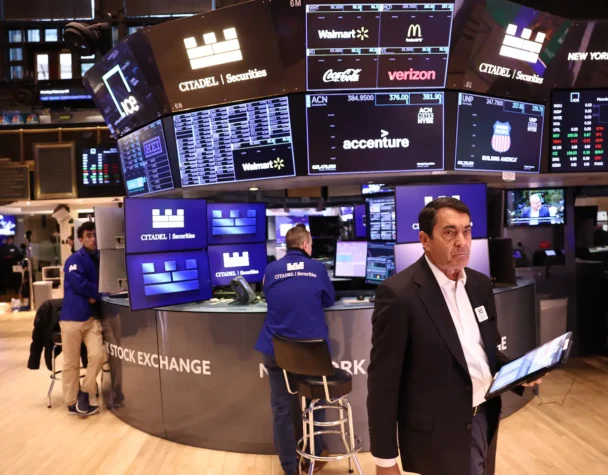
U.S. Tariff Shockwaves Rattle Global Markets as Stocks Plunge
Mon, April 07, 2025U.S. Tariff Policy Sparks Market Turmoil
The global financial landscape has been thrown into disarray following President Donald Trump’s surprise announcement on April 2, 2025, of sweeping tariffs on foreign imports. A 10% baseline tariff now applies across the board, with steeper rates hitting major trade partners: 34% for China, 20% for the European Union, and 25% specifically targeting automotive imports.
This aggressive shift in U.S. trade policy—designed to reduce the national trade deficit and bolster domestic manufacturing—triggered an immediate and intense market reaction. On April 3, the Dow Jones Industrial Average plummeted by 1,679 points, a 3.98% loss. The S&P 500 dropped by 4.88%, while the tech-heavy Nasdaq Composite saw a staggering 5.97% decline, marking one of the worst trading days since the early days of the COVID-19 pandemic.
In a stark warning, CNBC’s Jim Cramer likened the crash to “Black Monday,” the infamous market meltdown of 1987, suggesting these tariffs could rival that historic collapse in scope and consequence. Read more here.
Investor sentiment has turned sharply risk-averse, with analysts urging calm but warning that continued policy shocks could lead to deeper corrections. Financial planners are advising clients to stick with long-term investment strategies, resisting the urge to sell into panic-driven downturns.
Global Fallout: China Retaliates, Markets Reel
Internationally, the repercussions have been swift and severe. China wasted no time in announcing a retaliatory 34% tariff on all U.S. imports, prompting fears of a full-scale trade war. The move has significantly escalated tensions and sent global markets spiraling.
Asian markets bore the brunt of the fallout. Japan’s Nikkei 225 plunged nearly 8%, South Korea’s Kospi dropped sharply, and Australia’s S&P/ASX 200 also suffered major losses. Meanwhile, European exchanges faced significant declines, as fears spread of a global economic slowdown sparked by disrupted trade flows.
As capital seeks safe havens, investors are reallocating assets toward less-exposed regions and sectors. According to The Times, a shift in capital flows from the U.S. to markets in Europe and Asia has already begun, signaling investor attempts to hedge against rising uncertainty in American policy.
Economic Outlook: Bracing for the Next Wave
The growing tension between the world’s largest economies signals a potentially prolonged period of volatility. Market watchers are bracing for further retaliatory actions from other countries, especially within the EU, as global trade norms come under heavy strain.
As the dust settles from the initial impact, economists warn that these trade measures may ripple beyond stocks and into consumer prices, corporate profits, and ultimately, GDP growth rates. If the standoff persists, the odds of a global recession could rise substantially.
In short, investors and policymakers alike will need to navigate choppy waters in the coming weeks, with every headline potentially moving markets.

